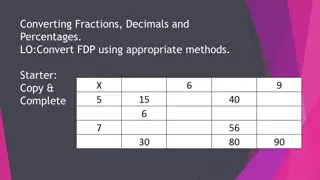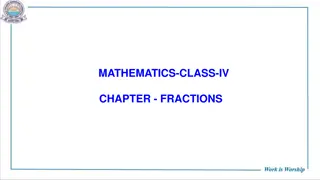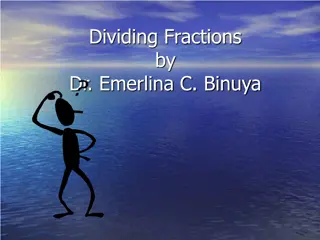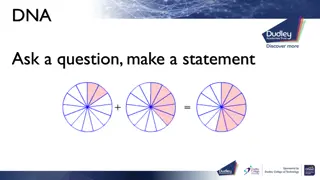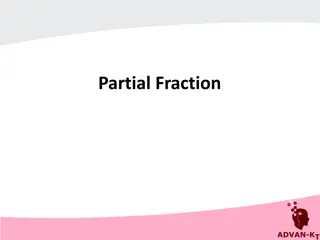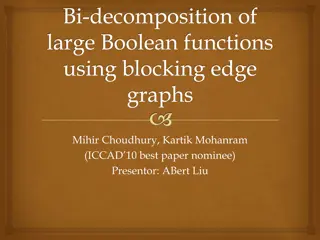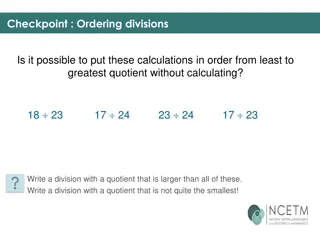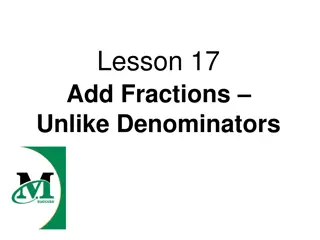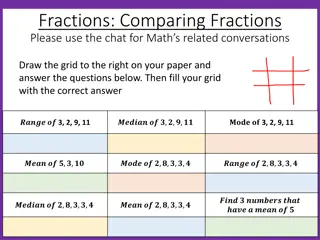Partial Fractions and Fraction Decomposition
In this presentation, Hossain Md. Waseem Firoz explores the concepts of proper and improper fractions, mixed fractions, and resolving fractions into partial fractions. Learn about factors, linear and quadratic denominators, and the process of partial fraction decomposition. Dive into examples and understand the nuances of working with various types of fractions in mathematics.
Download Presentation

Please find below an Image/Link to download the presentation.
The content on the website is provided AS IS for your information and personal use only. It may not be sold, licensed, or shared on other websites without obtaining consent from the author.If you encounter any issues during the download, it is possible that the publisher has removed the file from their server.
You are allowed to download the files provided on this website for personal or commercial use, subject to the condition that they are used lawfully. All files are the property of their respective owners.
The content on the website is provided AS IS for your information and personal use only. It may not be sold, licensed, or shared on other websites without obtaining consent from the author.
E N D
Presentation Transcript
Welcome to my Presentation Hossain Md Waseem Firoz Instructor (Mathematics) Kushtia Polytechnic Institute
Topics: Partial Fractions Define Proper and Improper Fractions. Resolve into Partial Fraction of the following types: a) Denominator having a non-repeated linear factor. b) Denominator having a repeated linear factor. c) Denominator having a quadratic factor.
Proper Fraction A fraction in which the numerator value is always less than the denominator value is known as a proper fraction. For example, 18/25, 19/45, 62/78, 1/6, 1/9, are proper fractions.
Improper Fractions An improper fraction has a numerator greater than the denominator. For example, 3/2 is an improper fraction, but 2/3 is a proper fraction, whose denominator is greater than the numerator.
Resolve into partial fractions: The method is called "Partial Fraction Decomposition", and goes like this: Step 1: Factor the bottom: Step 2: Write one partial fraction for each of those factors: Step 3: Multiply through by the bottom so we no longer have fractions: Step 4: Now find the constants A1and A2: And we have our answer:
Denominator having a non-repeated linear factor. Example: Partial Fractions with Non-repeated Linear Factors 3x+2x(x 2)(x+1)=Ax+Bx 2+Cx+1 3 x + 2 x ( x 2 ) ( x + 1 ) = A x + B x 2 + C x + 1 .
Denominator having a non-repeated linear factor.






